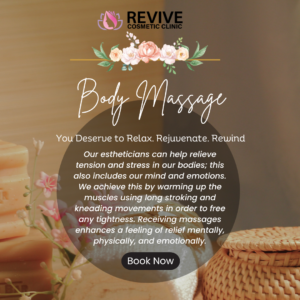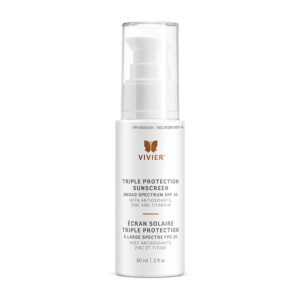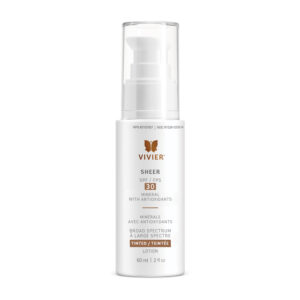Are you tired of the endless cycle of shaving, waxing, or plucking unwanted hair? Laser hair removal may be the solution you’ve been looking for. Before you book your first session, however, there are several crucial facts you should understand to ensure a safe and effective experience. In this article, we will cover nine essential facts about laser hair removal, including its benefits, risks, and what to expect from the procedure.
How Laser Hair Removal Works
- Laser hair removal employs the power of concentrated light to target and eliminate hair follicles effectively. The principle behind this technology is selective photothermolysis. The laser emits a specific wavelength of light that is absorbed by the melanin (pigment) present in the hair shaft. When the melanin absorbs the laser’s energy, it generates heat, which damages the hair follicle, preventing future hair growth.
- The laser used in hair removal is designed to precisely target the hair follicles while leaving the surrounding skin intact. This makes it a safer and more efficient method compared to other hair removal techniques.
- Laser hair removal services in Kitchener can be used on various body areas, including the face, arms, legs, bikini line, and more. The versatility of this method makes it an attractive option for those looking for a long-term solution to unwanted hair.
- Understanding the basic science behind laser hair removal is crucial in comprehending why it is effective and how it can benefit you. However, it’s equally important to consult with a trained professional who can assess your unique skin and hair type to determine if you are a suitable candidate for the procedure.
Suitable Candidates
- While laser hair removal is most effective for individuals with light skin and dark hair due to the contrast that allows for more precise targeting, advancements in technology have expanded its suitability to a wider range of skin and hair types. Today, people with various skin tones and hair colors can benefit from laser hair removal.
- People with darker skin may require specialized lasers, such as Nd:YAG, to avoid damaging the surrounding skin while effectively treating the hair follicles. Lighter hair colors, such as blonde or white, are less responsive to laser treatment since they have less melanin to absorb the laser energy.
- It’s essential to consult with a qualified practitioner who can evaluate your specific skin and hair type to determine the most appropriate laser and treatment plan for you. In some cases, individuals with less ideal hair and skin combinations may require more sessions to achieve desired results, but successful outcomes are still attainable with proper care and expertise.
- Remember that a thorough consultation with a qualified practitioner is the first step in achieving effective and safe laser hair removal services in Kitchener, regardless of your skin and hair characteristics.
Multiple Sessions Required
- It’s crucial to understand that laser hair removal is not a one-time procedure. To achieve the best results, you’ll typically need multiple sessions. This is because hair grows in different stages, and the laser is most effective during the active growth phase (anagen). Not all hair is in this stage at the same time, so multiple sessions are necessary to catch the hair in the optimal phase.
- The exact number of sessions required can vary depending on factors like your skin type, hair color, and the area being treated. In general, most individuals need between four to six sessions, spaced several weeks apart, for the best outcome.
- Consistency is key in laser hair removal. Skipping sessions or not completing the recommended number can lead to less effective results. It’s important to follow your provider’s guidance and stick to the treatment schedule for the best chance of achieving long-term hair reduction.
Pain and Discomfort
- One common concern for individuals considering laser hair removal is the level of pain or discomfort involved. The sensation experienced during the procedure can vary from person to person and depends on factors such as the treatment area’s sensitivity and your pain tolerance.
- Many people describe the feeling as similar to a rubber band snapping against the skin. While it can be uncomfortable, most individuals find the sensation tolerable, and the procedure is relatively quick. Additionally, modern laser systems often include cooling mechanisms to minimize discomfort during treatment.
- If you are particularly sensitive to pain or have concerns about the procedure’s discomfort, you can discuss options with your provider. They may recommend applying a topical numbing cream to the treatment area before the session to help alleviate any discomfort.
- It’s important to note that any discomfort experienced during the procedure is typically short-lived and subsides shortly after the treatment is completed. The potential discomfort is often outweighed by the long-term benefits of reduced hair growth.
Side Effects
- Like any medical procedure, laser hair removal comes with potential side effects, although they are usually mild and temporary. Immediately after a session, you may experience some redness and swelling in the treated area. This is a normal response and typically subsides within a few hours to a couple of days.
- It’s essential to follow post-treatment care instructions provided by your practitioner to minimize the risk of side effects. This may include avoiding sun exposure, wearing sunscreen, and refraining from activities that could irritate the treated area.
- While rare, more serious side effects such as burns or skin discoloration can occur, especially if the procedure is performed by an untrained or inexperienced provider or on individuals with darker skin tones. This underscores the importance of choosing a qualified and reputable provider for your laser hair removal treatments.
- Prior to undergoing the procedure, your practitioner should thoroughly discuss potential side effects and how to manage them, ensuring you are well-prepared for your sessions.
Avoid Sun Exposure
- Sun exposure is a critical consideration before and after laser hair removal sessions. Tanned skin can increase the risk of complications and decrease the effectiveness of the treatment. The laser targets the melanin in the hair follicles, and if your skin is tanned, the laser may inadvertently target the melanin in your skin, potentially causing burns or hyperpigmentation.
- To avoid these issues, it’s essential to avoid sun exposure, including tanning beds, at least six weeks before your scheduled laser hair removal sessions. Additionally, you should apply broad-spectrum sunscreen with an SPF of 30 or higher to the treatment area if it must be exposed to the sun.
- After the procedure, continue to protect your skin from the sun. Wearing protective clothing and applying sunscreen is crucial in the weeks following each session to prevent complications and promote optimal results.
Maintenance and Touch-Ups
- Achieving the best results with laser hair removal typically involves completing the initial series of sessions as recommended by your provider. However, it’s important to understand that laser hair removal may not always be completely permanent. Factors such as hormonal changes can stimulate new hair growth over time.
- This is why maintenance sessions or touch-ups may be required to keep unwanted hair in check. The frequency of these sessions can vary from person to person and depends on factors like genetics and hormonal fluctuations. Your provider will advise you on the best approach for long-term hair reduction based on your unique circumstances.
- By committing to maintenance sessions as needed, you can enjoy the long-lasting benefits of reduced hair growth that laser hair removal offers.
Long-Term Results
- Laser hair removal offers a significant reduction in hair growth that can last for years. While it may not be entirely permanent for everyone, many individuals experience a substantial and long-lasting reduction in hair density.
- Compared to the ongoing costs and time commitment of traditional hair removal methods like shaving or waxing, laser hair removal is often more cost-effective in the long run. It eliminates the need for frequent hair removal sessions, saving you both time and money over time.
- To maximize the longevity of your results, it’s crucial to complete the recommended sessions, follow proper aftercare, and attend maintenance sessions as necessary.
Choose a Qualified Provider
- The success and safety of your laser hair removal experience depend significantly on choosing a qualified and reputable provider. It’s essential to do your research and select a practitioner who is certified, experienced, and uses FDA-approved equipment.
- When searching for “laser hair removal services in Kitchener” or “laser hair removal near me in Waterloo,” read reviews, ask for recommendations, and schedule consultations with potential providers. During the consultation, ask questions about their experience, the type of laser technology they use, and their safety protocols.
- A trustworthy provider will take the time to assess your unique skin and hair type, discuss expectations, potential side effects, and provide a personalized treatment plan. Don’t hesitate to ask for references or before-and-after photos of previous clients to gauge their expertise.






